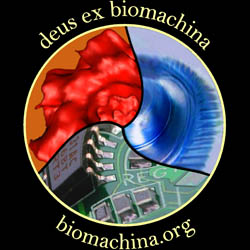


![]()



![]()
![]()
 |
In 2003 we built a Virtual Reality system at the School of Biomedical Informatics. The system allowed our coworkers to use virtual reality applications and to explore scientific datasets calculated by simulation or acquired by experiment. The system consisted of two InFocus LP530 DLP projectors that are used with polarization filters and inexpensive glasses to support passive stereoscopic viewing. The projection system also featured two mirrors which help to reduce the space needed. For a intuitive and natural interaction with the virtual objects, we used a magnetic tracking system - a Polhemus Fastrak - equipped with four sensors (including a special pen-style sensor). A NVIDIA FX4500 card kindly provided by PNY Technologies facilitated the syncronized stereoscopic rendering of very large volumetric datasets. The system was designed and built by Stefan Birmanns. |
 |
Our Sculptor
visualization
package takes advantage of haptic rendering using the SensAble
Technologies 1.5/6DOF
Phantom haptic
device for
force and
torque feedback. We acquired this device in 2001 at The Scripps
Research Institute and again in 2003 after our move to Houston. In
addition, our group also acquired a number of less expensive haptic
devices that provide translational feedback only.
|
 |
From 2001-2003 we operated an AMD
Athlon cluster "Ramses" at The Scripps Research Institute. The original
documentation is still available as a cluster building reference:
After 2003 on we used a Dell 180-Node 3GHz Pentium 4 Cluster at the School of Biomedical Informatics. |
 |
Our Laboratory for Molecular Imaging at the Institute of Molecular Medicine for the Prevention of Human Diseases was equipped with a LEO 912 OMEGA Energy-Filter Transmission Electron Microscope. Various Leica Optical Microscopes for Digital and Visual Imaging (Bright/Darkfield, Phase Contrast) complemented the EM. Additional lab equipment included Edwards Vacuum Systems, such as a ScanCoat Six Sputterer, Auto 306 Vacuum Coater, and ED3 Plate Degasser. Digital imaging capabilities included a Nikon Coolscan 8000 ED Film Scanner and a TVIPS 214 2Kx2K CCD camera. The facility, which we operated from 2003-2007, remained at the Institute in Houston. |
![]()